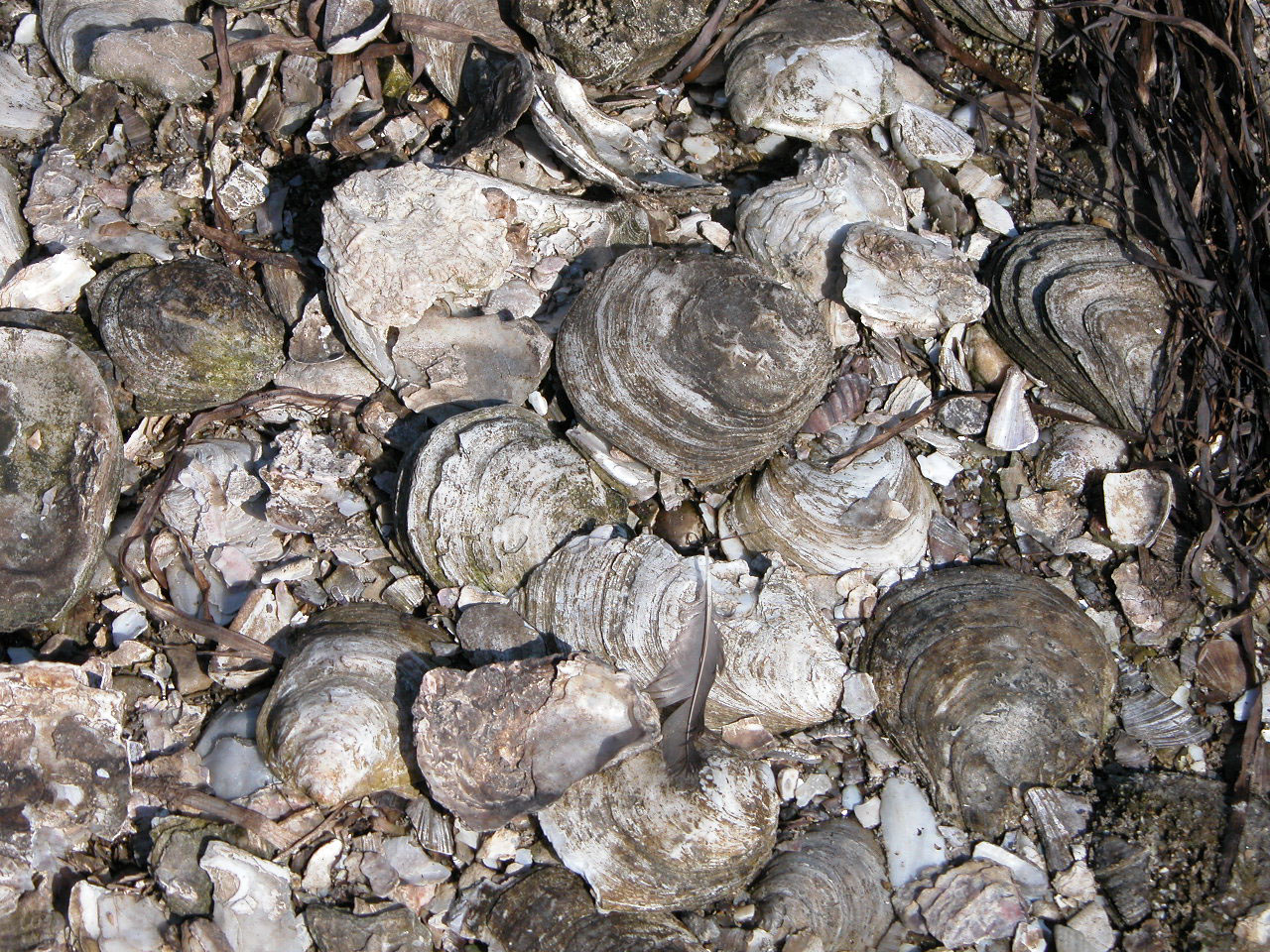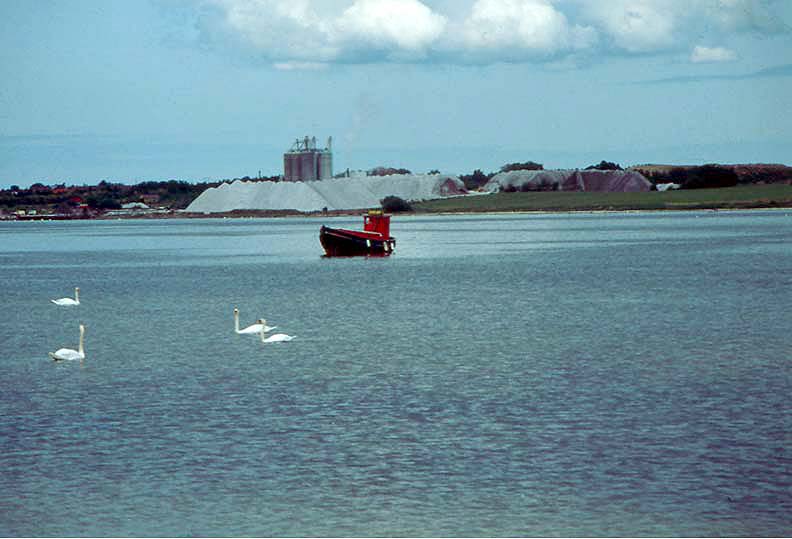Oyster
(Ostrea edulis).There are no oysters in Roskilde Fjord nowadays but in the Stone Age, 7-8,000 years ago, there were big oyster beds at narrow points in the fjord. These beds now form sizeable layers of oyster shells, up to more than 10 metres in depth. They are in the narrows by Frederikssund, by Kølholm, and on the west coast of the fjord from Jyllinge Holme to Selsø Hage, and a few other places.
Oyster shells were formerly used in the production of chicken feed, roofing, and lime for agriculture. This exploitation was stopped by a conservation order in 1995, but in a number of places mining has left deep holes in the bottom of the fjord. The shell layers are exposed in the little harbour on Eskilsø, so you can see how the bottom consists almost entirely of oyster shells. We know from kitchen middens that oysters made up a significant proportion of Stone Age hunters’ diet.
 In Eskilsø harbour the beach is covered with 8,000 year old oyster shells.
In Eskilsø harbour the beach is covered with 8,000 year old oyster shells.
 The biggest of the shell works was off Kølholm. The big heaps are excavated oyster shells.
The biggest of the shell works was off Kølholm. The big heaps are excavated oyster shells.
Key to the Distribution Map.
